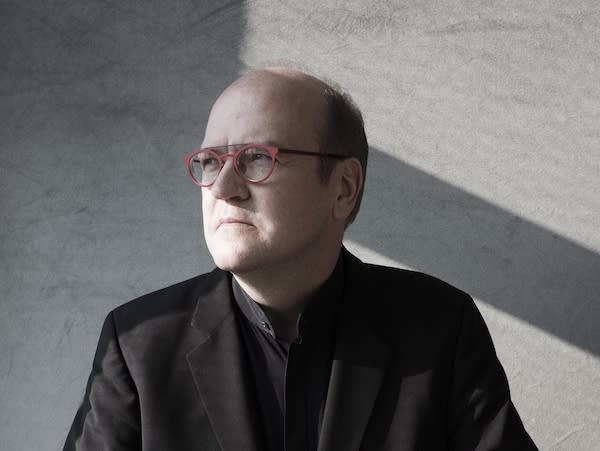Labadie’s bracing style brings fresh illumination to familiar Mozart

Bernard Labadie conducted the New World Symphony in music of Handel, Haydn and Mozart Saturday night in Miami Beach.
One of Mozart’s greatest symphonies moved at the speed of a Rossini overture. String players restrained their vibrato. And throughout the concert Saturday night by the New World Symphony, textures were wiry and transparent, as a leading period-music specialist led the orchestra through works of the 18th century.
Bernard Labadie, founder of the acclaimed Quebec ensemble Les Violons du Roy and a regular New World podium guest, conducted works of Handel, Haydn and Mozart at New World Center in Miami Beach. Despite the smaller orchestral forces, particularly in the opening work, the music felt big, and there was nothing studied, fussy or antiquarian about the playing.
The Overture to Handel’s opera Ariodante, a 1734 work about love and jealousy among the nobility of medieval Scotland, moved with stately grandeur, with clarity and vigor in the ensuing counterpoint. String players used no vibrato. The Gavotte crackled with earthy energy. And despite the high speed of the Bourrée, the orchestra played in such a rhythmically marked manner that the music always maintained a firm shape and structure.
Labadie, who last year became principal conductor of New York’s Orchestra of St. Luke’s, apparently lifted the ban on vibrato for the Classical-era works that followed. Haydn’s Sinfonia Concertante, written as the celebrated composer made a visit to London, may not be on par with the best symphonic works of his mature years. But it’s a tuneful work in which the genial composer allowed each of the four soloists a share of the attention.
Heard from the perspective of the Baroque piece that preceded it, the Haydn work felt large and impressive, rather than quaint and small-scale, as Haydn works tend to feel on the rare occasions they appear on symphony programs.
The orchestra played in an assured, tightly focused manner, with broad tones in the strings and a crisp precision in winds and brass. In keeping with Classical practice, Labadie split the violins, placing the second violins on the right side of the orchestra, where conductors usually place the cellos, giving the ensemble a brighter, clearer, stereophonic tone.
Taking on the solo parts were four New World fellows: oboist James Riggs, bassoonist Bee Ungar, violinist Sodam Lim and cellist Ian Greenberg. All played with smooth accuracy and wit in parts in which Haydn typically paired winds or strings. Violinist Lim, who had the most extensive part, played in an effortless, confident manner in Haydn’s runs and ascents up the fingerboard, and she brought a big, dramatic tone to the operatic recitative that opens the concluding Allegro con spirito. Also noteworthy was the performance of Ungar, who brought a warm tone and lively style to his bassoon part.
In the first movement of Mozart’s Symphony No. 40 in G minor, Labadie’s interpretation really put the Molto in Molto Allegro. At first, it seemed like his high-speed approach robbed the famous opening melody of weight and significance. But by the repeat Labadie’s tempo—and the taut grimness of the violin bowing—gave the music a brooding intensity that helped create an unusually dark mood, even for this symphony.
He brought out inner voices, so that a cello riff that may be just a passing interior rumble in some interpretations, leapt out of the orchestra and seized attention. The movement’s climax, in which a major key melody repeats in minor, came off as particularly somber, with dour blasts of horns and winds.
The quick tempos worked well for the Andante, giving the movement a natural flow and restlessness that seemed to match the rest of the symphony, rather than making it the pastoral interlude it tends to become in typical performances.
The Menuetto opened unusually softly. Rather than leading a bold, thumping performance, Labadie brought out each voice in the counterpoint, using clarity and interpretative force to generate a performance of cool intensity. The concluding Allegro assai was light and well shaped, relying on momentum, clarity and Labadie’s aggressive shaping of each phrase for its impact.
The program will be repeated 2 p.m. Sunday at New World Center in Miami Beach. nws.edu
Posted in Performances
Leave a Comment
Sun Apr 7, 2019
at 11:22 am
No Comments




